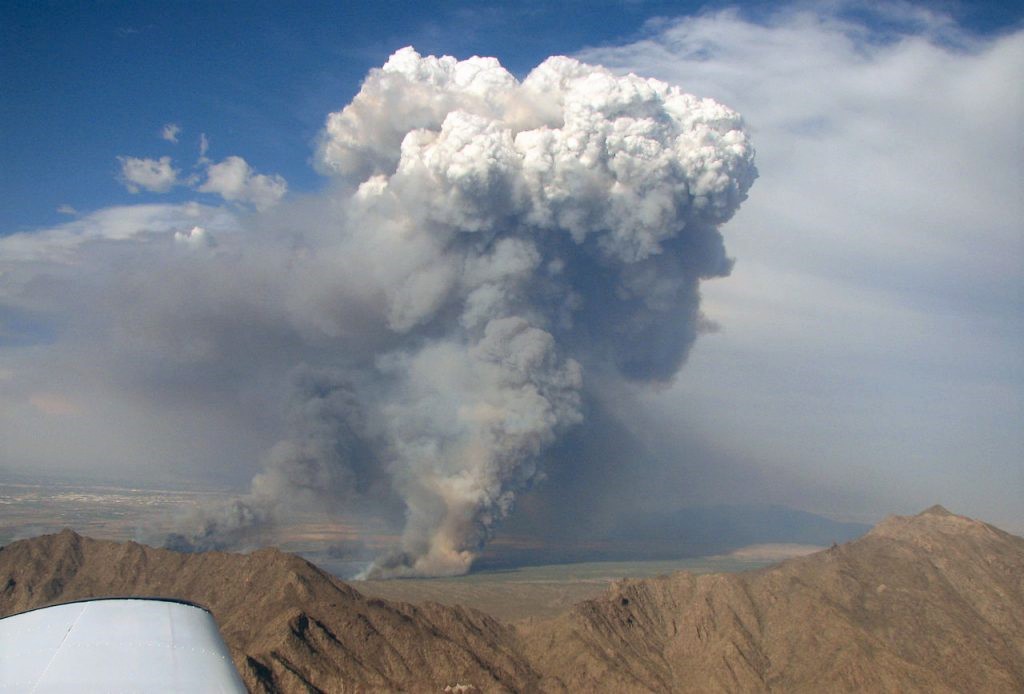 About 17 kilometers above the Earth’s surface, the first layer of the atmosphere meets the second one. At a boundary called the tropopause, the troposphere ends and the stratosphere begins. Straddling this interface, for about five kilometers on either side, is a band of the atmosphere labeled, matter-of-factly, the “upper troposphere/lower stratosphere” — the UTLS.
About 17 kilometers above the Earth’s surface, the first layer of the atmosphere meets the second one. At a boundary called the tropopause, the troposphere ends and the stratosphere begins. Straddling this interface, for about five kilometers on either side, is a band of the atmosphere labeled, matter-of-factly, the “upper troposphere/lower stratosphere” — the UTLS.
This chilly slice of dust and gases doesn’t get a lot of press. But the materials swirling around in it powerfully influence the climate we experience on Earth, and good data about what’s going on in the UTLS will power much more accurate models of how we can expect the climate to change, and when. So far, however, we know very little.
“It literally is, as hard as this is to believe, an unexplored region in the atmosphere,” said Scott Bailey, a professor in Virginia Tech’s Bradley Department of Electrical and Computer Engineering. “And it’s crucial for climate change prediction.”
Effective mitigations require accurate predictions, said Bailey, who is also the director of Space@VT, the university’s center for space science and engineering research.
“Imagine you’re the mayor of a big coastal city,” he said. “You know that over the next 50 years the sea level is going to rise and cause flooding, so what do you do? Do you need to strengthen the beaches? Do you need to update the building codes to prepare for harsher storms? Do you need to start to literally move the city inland? And when? Is that a 20-year problem or a 40-year problem? You’re going to have those questions for every city on the coast, all over the country.”
The basic narrative about climate change is that greenhouse gases trap heat, raising the temperature and driving extreme weather events.
“But there’s much more to the story,” Bailey said, explaining that human activity actually contributes to two competing processes. Warming is one of them, but the other, less intuitively, is cooling: Aerosols suspended in the atmosphere act like a heat shield, scattering incoming sunlight back out into space and tamping down temperatures.
The UTLS, where the temperature and air pressure create congenial conditions is where a lot of the drama plays out. Researchers know what some of those aerosol compounds are, but very little about their relative abundances or how they change with time. Bailey, with a heavy-hitting team of collaborators at research institutions all over the country, has mapped out a plan that could finally shed some light on this mysterious region of the atmosphere.
Their proposal features a fleet of six small satellites, each about the size of a picnic cooler, that would orbit not within the UTLS but hundreds of kilometers above it.
The technological heart of the project is the satellites’ cargo. Each one will carry unique sensors that measure how much of the sun’s light is absorbed at precise wavelengths. Twice every orbit, when each satellite will be in just the right position to peer down through the UTLS at the sun, the sensors will capture sunlight filtered through the UTLS aerosols. The resulting absorption patterns will function like chemical fingerprints that the team can use to identify the components of those aerosols and track how they change with time with greater resolution and precision than has been available before.
“What’s unique about this instrument is that it can back out atmospheric properties in really narrow altitude increments,” Bailey said.
The aerosols floating in the UTLS originate on Earth. They come from sea salt, biological material, plumes of wildfire ash, smog belched from factory smokestacks, and volcanic dust, churned upwards into the atmosphere by storms and air currents and other turbulence.
Some amount of these aerosols would filter into the UTLS naturally. But human activity has pumped enough into the atmosphere to throw off the balance of heat coming in and out.
“We’re perturbing the atmosphere in ways we can’t predict and seeing changes that we’re struggling to understand,” Bailey said. “If one day you see pollution generated by a wildfire, for example, you want to track its movement over time. You need a detailed profile to do that, and that’s what this instrument can do.
“How much it’s going to warm by when is crucial, and there are still big error bars on when we’re going to hit certain temperatures,” Bailey said. “We’re not going to get there without this mission. This is not a small step forward — this is a big step forward.”



